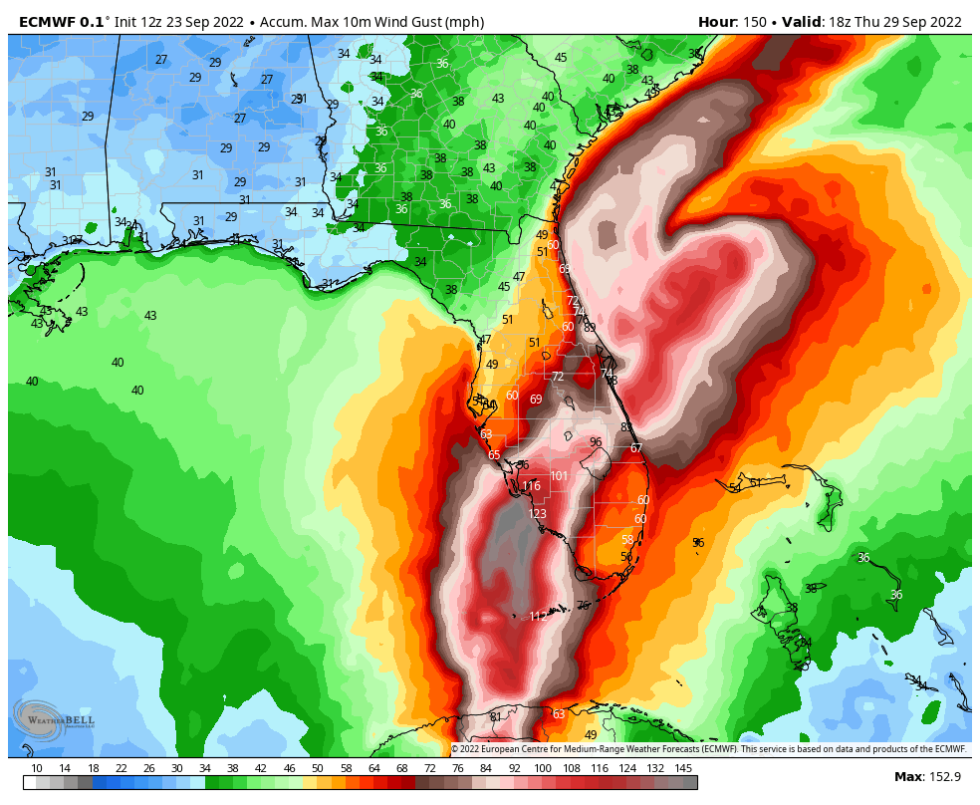NASA seems to be in full “send it” mode for the Artemis I mission

Trevor Mahlmann
On Friday afternoon, senior officials at NASA joined a teleconference to speak with reporters about the current plan to launch the Artemis I mission from Kennedy Space Center in Florida. This will be the third attempt to get the massive Space Launch System rocket off the ground and boost the Orion spacecraft into lunar orbit for an approximately 40-day uncrewed test flight before returning to Earth.
The rocket is ready, officials said. During fueling tests and launch attempts NASA has been bedeviled by hydrogen propellant leaks, as the tiny molecule is difficult to handle and constrain at super-chilled temperatures. However, following a longer-than-expected, but ultimately successful propellant loading test on Wednesday, NASA engineers expressed confidence in their revamped fueling procedures.
NASA has also reached an accord with US Space Force officials to extend the battery life for the rocket’s onboard flight termination system. This left only weather as a potential constraint to a planned launch attempt for Tuesday, September 27, at 11:37 am EST (15:37 UTC). The problem is that weather now poses a significant threat to the schedule due to a tropical depression that will likely track toward Florida in the coming days. There is an 80 percent chance of unacceptable weather during the launch window.
To roll, or not to roll
Despite the bleak forecast, NASA is pressing ahead.
“Our Plan A is to stay the course and get the launch off on the 27th,” said Mike Bolger, the manager of NASA’s Exploration Ground Systems Program at Kennedy Space Center. “We also realize that we really need to be paying attention and thinking about a plan B.”
Bolger explained that NASA’s backup plan involved rolling the rocket and spacecraft back inside the large Vehicle Assembly Building a few miles from the launchpad, where it would be protected from the elements. Readying the rocket and rolling it back would take about three days, he said. NASA hopes to wait a day, until Saturday, to make a final decision. NASA officials will meet again on Friday evening to consider the weather.
These comments were reasonable, and it is prudent for NASA to ensure it has the best available data about Tropical Depression Nine, which only recently developed a center of circulation. As a result of this, forecasts should improve over the next day or two.
This is a delicate balance for NASA—waiting long enough to get the best forecast, but also leaving enough time to roll back the rocket as well as releasing employees from the space center before the worst of the storm arrives. According to the National Hurricane Center on Friday afternoon, the earliest “reasonable arrival time” for tropical storm-force winds is around midday on Tuesday, so waiting until Saturday morning would be cutting it close.
Off the rails
After Bolger’s comments, however, the teleconference started to go somewhat off the rails. It became clear that NASA officials were not just waiting for forecast data, but are reluctant to roll the SLS rocket back to its hangar. John Blevins, SLS chief engineer, indicated that he would not be inclined to roll the rocket back to its hangar even if the space center were hit by a tropical storm, which has lesser winds than a hurricane but still packs a significant punch.
“If we actually experienced a true hurricane, it would be my recommendation that we consider rolling back,” Blevins said. “Usually, the footprint of those things isn’t as wide, you know, for those high winds.”
Based on NASA’s risk analyses, Blevins said he believed that the SLS rocket and Orion spacecraft could withstand winds up to 74.1 knots (85 mph) at a level of 60 feet off the ground. The primary risk is wind loads on the vehicle, but he acknowledged there would be concerns about “things that might be moving around in a storm like that.” This is a somewhat curious risk posture from a space agency that is obsessively concerned about “foreign object debris” with its space hardware.

Weather Bell
So what is the upside of risking the rocket and spacecraft, which were developed at a cost of more than $30 billion, in a tropical system? By waiting out the weather NASA is seeking to preserve an opportunity to launch on September 27 or October 2. Failing that, it will need to roll back to the hangar regardless.
Doing so would likely push the next launch attempt into the second half of November. “Some life-limited items would be coming up in that case,” Blevins said. This appeared to be an admission that for NASA, the clock is ticking on a rocket that has been fully stacked for launch for nearly a year now, and which has critical parts that cannot be serviced in that configuration. In short, NASA officials would very much like to get off the pad as soon as possible.
Read More: NASA seems to be in full “send it” mode for the Artemis I mission

